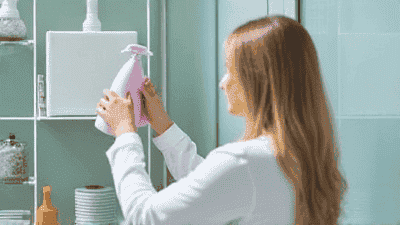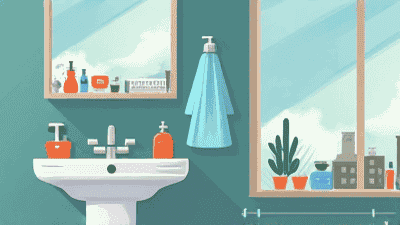Cleaning vs. Disinfecting: What You Need to Know for Bathroom Hygiene



Ensuring a clean and hygienic bathroom is essential for maintaining health and well-being in any home. However, many people are confused about the distinctions between cleaning and disinfection. While these terms may seem interchangeable, they refer to two different processes that play critical roles in creating a safe and sanitary bathroom environment. Understanding the differences between cleaning and disinfection, as well as when and how to implement each, is key to effective bathroom hygiene. In this comprehensive guide, we will explore the definitions, strategies, and best practices for cleaning and disinfecting your bathroom.
Before delving into the specifics of bathroom hygiene, it is crucial to define what cleaning and disinfection entail.
Cleaning is the process of removing dirt, debris, and impurities from surfaces. It typically involves using water, detergents, or soap to physically wash away contaminants. Cleaning does not necessarily kill germs or bacteria; it simply reduces their number by removing visible dirt and grime.
Disinfection is a more intense process aimed at killing germs on surfaces. This involves using chemical agents, known as disinfectants, that are specifically formulated to target and destroy pathogens including bacteria, viruses, and fungi.

In the context of bathroom hygiene, both cleaning and disinfection are critical. Here are some reasons why a two-step approach is necessary:
Bathrooms are high-traffic areas that can harbor a wide variety of germs, including those responsible for infections. Cleaning first helps to remove dirt and organic matter that can inhibit the effectiveness of disinfectants. Disinfecting afterward ensures that pathogenic bacteria and viruses are eliminated.
Regular cleaning can preserve the integrity of bathroom surfaces. Dirt and grime can lead to staining, mold, and mildew growth, which can damage materials like grout, tile, and fixtures. By routinely cleaning, you can extend the lifespan of your bathroom surfaces.
A clean and disinfected bathroom contributes to overall hygiene in the household. It minimizes the risk of cross-contamination from surfaces to individuals, protecting family members from various illnesses.
Now that we understand the fundamental differences between cleaning and disinfection, let’s explore the best practices for implementing these processes in your bathroom routine.
Having the right tools and products is essential for effective cleaning and disinfection. Here is a list of items you may require:
Follow these steps to effectively clean your bathroom:
Start by removing items from countertops, shelves, and the bathtub. This enables you to clean all surfaces more effectively. Organize items so that they are easy to access when cleaning is complete.
Begin your cleaning process by dusting light fixtures, shelves, and high corners with a microfiber cloth. This prevents dust from settling on clean surfaces later on.
After cleaning all surfaces, mop the bathroom floor using plain water or a suitable floor cleaner. If you have a tile floor, make sure to get in between and around any fixtures.
It is important to rinse your cleaning tools regularly to prevent dirt and bacteria from being redeployed onto clean surfaces. Rinse sponges, brushes, and cloths thoroughly after use.
After the cleaning process, proceed with disinfecting the surfaces following these steps:
Select a disinfectant that is effective against the specific pathogens you want to eliminate, such as the flu virus or norovirus. Always refer to the product label for efficacy against germs.
For maximum effectiveness, follow the instructions on the disinfectant label regarding dwell time. This is the period that the disinfectant needs to remain wet on a surface to effectively kill germs. Skipping this step can reduce the efficacy of disinfection.
Some disinfectants may require rinsing after the appropriate dwell time. This is especially true in food-related areas, but in most bathroom situations, rinsing is unnecessary. Always follow product guidelines to ensure safe usage.
Maintaining a clean and disinfected bathroom doesn’t end after deep cleaning. Here are tips for simple yet effective maintenance:
In high-use households, quick daily touch-ups can minimize grime buildup. Quick wipe-downs of high-touch surfaces and a quick check of the toilet can help keep your bathroom in good condition.
Set aside time each week to perform a thorough cleaning and disinfection of your bathroom. This could involve all surfaces, fixtures, and floors as described above.
Consider incorporating maintenance tasks once a month, including cleaning light fixtures, washing shower curtains, and inspecting for mold. This proactive approach can help prevent serious cleanliness issues over time.
Teach your family members the importance of maintaining cleanliness in the bathroom. Responsibilities can be shared by assigning age-appropriate tasks to children, which not only keeps the bathroom clean but also instills a sense of responsibility.

Certain situations may require additional attention to cleaning and disinfection protocols. Here are some scenarios to consider.
If someone in the household has been ill, particularly with a contagious illness, it’s crucial to conduct thorough cleaning and disinfection. This includes frequently handled items such as towels, bath mats, and toilet handles.
If you’re bringing a newborn into your home, extra care should be taken to disinfect surfaces in the bathroom. Babies are more susceptible to germs, and maintaining a sanitary environment is paramount.
Certain seasons may lead to increased dirt and allergens, such as springtime dust or fall leaves. Adjust your cleaning regimen accordingly and increase your disinfection efforts during these times.
Bathrooms used by elderly family members can benefit from added attention to safety and hygiene. Ensure that all surfaces are cleaned and disinfected to minimize the risk of infections and falls.
Understanding the difference between cleaning and disinfection is essential for maintaining optimal bathroom hygiene. Both processes play crucial roles in keeping your bathroom a safe, pleasant, and healthy environment for you and your family.
By incorporating effective cleaning and disinfection practices into your routine, you can effectively reduce germs, enhance the lifespan of your bathroom surfaces, and promote overall health. A two-step approach—cleaning first to remove dirt and impurities, followed by disinfection to kill pathogens—ensures the best results.
Equip yourself with the right tools, establish a structured cleaning schedule, and involve all family members in maintaining a pristine bathroom. With commitment and consistency, you can protect your family’s health and create a space that everyone can enjoy.